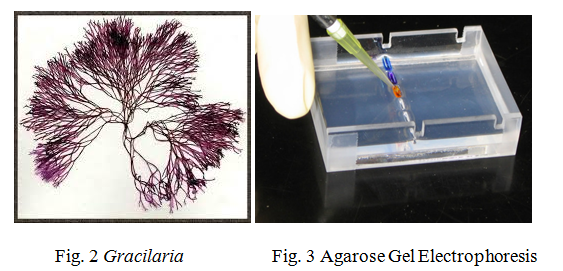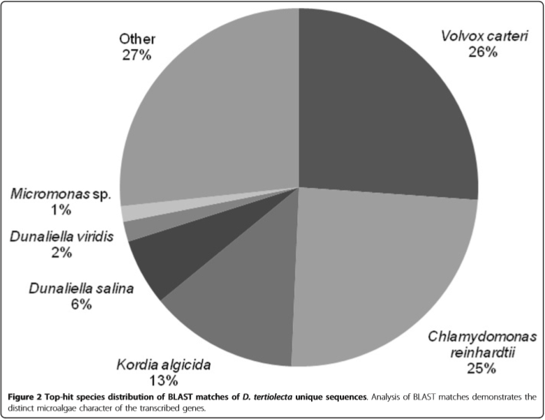Authors: Deepali Rahi, Waghmare, S. G.
CPBMB, Kerala Agricultural University, Thrissur-680656
*Email: deepalirahi@gmail.com
Introduction:
Marine algae are known as sea weeds. These are multicellular, macroscopic, lacks vascular system and carry pigments. Algae plays a major role to act as a primary as well as the secondary source. Macro alagae i.e.Rhodophyta (red algae), Chlorophyta (green algae) and Phaeophyta (brown algae) serve as nutraceuticals and therapeutics. Whereas microalgae are a rich in pigments, fatty acids, sterols and polysaccharides etc. Marine algae are untapped reservoir of numerous bioactive compounds but besides of numerous applications in various fields, it is not well explored. Biotechnology is required to incorporate the traits to enhance the production of algae as well as their bioactive compounds.
Applications:
- Food industry:
Algal food is consumed in different part of the world e.g. red algae Pyropia is consumed in Japan and famous as nori since more than 500 years. Azolla is a nutritious and easily available source for cattle feed. Red algae Carageenan is used to extract alginates which is present in its cell wall and broadly used in food industries e.g. it acts as stabalizers and emulsifiers in ice creams industry. Polysaccharides derived from these algae like agar and alginate are used as thickeners in jelly preparations.

Fig. 1 Nori
Image source:
http://mesa.edu.au/marine_algae/images/algae_food.jpg
Biomaterial:
Agarose is also used as biomaterials that are industrially available. Gracilaria is used for agarose and widely used as agarose gel electrophoresis (AGE). Marine algae are also a source of bioactive compounds. It can also act as bioremediation e.g. Azolla is known to remove heavy metals like Cu, Zn, Pb and Cr. Also, some algae like… acts as pollution indicators. Eutrophication is known for indication of over nutrition of phosphorous and nitrogen which depicts that organism in the water body are not getting enough oxygen and light

Image source:
http://68.media.tumblr.com/tumblr_lfexbsTdIr1qf00w4.jpg
- Biodiesel:

Fig. 4 BLAST analysis
Image source:
Yazdi, H. R., Haznedaroglu, B. Z., Bibby, K., and Peccia, J. 2011. Transcriptome sequencing and annotation of the microalgae Dunaliella tertiolecta: Pathway description and gene discovery for production of next-generation biofuels. Genomics 12: 1471-2164.
- Advantages:
- Enzymes from extremophile marine organisms does not get degrade while used in cooking.
- Unlike first generation plant based bio-diesel, second generation algae based bio-diesel can be grown easily, faster and in lesser space.
- Algae based bio-diesel has more vehicle compatibility than plant based diesel.
- Disadvantages:
- Large supply of bioactive compounds is a big challenge
- Algae provides bioactive compounds but in very minute quantity, it can be overcome by metabolic engineering.
- Bio diesel is one and half time more expensive, which precludes it to be used on a large scale.
Marine algae have immense of power to fulfill the present scarce situation in various fields like bioenergy or food demand. Its proper cultivation can fulfill the gap between its demand and production, this can be met by using biotechnological tools and techniques.
References:
1. Rasmussen, S. R. and Morrissey, M. T. 2007. Marine biotechnology for production of food ingredients. Adv. Fd. Nutr. Res. 52(4): 1043-4526.
2. Rhishipal, R., and Philip, R. 1997. Selection of Marine Yeasts for the Generation of Single Cell Protein from Prawn-shell Waste. Bioresource Techol. 65: 255-256.
3. Yazdi, H. R., Haznedaroglu, B. Z., Bibby, K., and Peccia, J. 2011. Transcriptome sequencing and annotation of the microalgae Dunaliella tertiolecta: Pathway description and gene discovery for production of next-generation biofuels. Genomics 12: 1471-2164.
About Author / Additional Info:
Presently pursuing M.Sc. Agri. Biotechnology and interested in research related to molecular biology of plants.